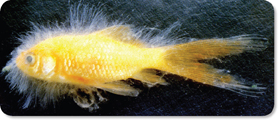
FIGURE 21–10 Slime Mold Life Cycle The feeding-plasmodium stage in the slime mold life cycle is a collection of many amoebalike organisms—in some species, these organisms are contained within a single cell membrane. The plasmodium eventually produces sporangia, which in turn undergo meiosis and produce haploid spores. The spores grow into amoebalike or flagellated cells. The flagellated cells then fuse to produce diploid zygotes that repeat the cycle.
dMYSTERY CLUE

Nutrients from decomposing potatoes infected by potato blight enter the blight organism by diffusing through its cell walls. Which organism described on these pages feeds in a similar way?
Slime Molds Another type of heterotrophic protist is a slime mold, which thrives on decaying organic matter. Slime molds are found in places that are damp and rich in organic matter—on the floor of a forest or a backyard compost pile, for example. Slime molds play key roles in recycling nutrients in an ecosystem.
At one stage in their life cycle, shown in Figure 21–10, slime molds exist as a collection of individual amoebalike cells. Eventually these aggregate to form a large structure known as a plasmodium, which may continue to move. The plasmodium eventually develops sporangia, in which meiosis produces haploid spores to continue the cycle.
Protists That Absorb Some protists survive by absorbing molecules that other organisms have released to the environment. Water molds like the one shown in Figure 21–11, for example, grow on dead or decaying plants and animals, absorbing food molecules through their cellulose cell walls and cell membranes. If you've seen white fuzz growing on the surface of a dead fish in the water, you've seen water molds in action.

FIGURE 21–11 Water Mold This dead goldfish is covered with the common water mold Saprolegnia. Compare and Contrast Contrast how a water mold and a paramecium obtain food.

Table of Contents
- Formulas and Equations
- Applying Formulas and Equations
- Mean, Median, and Mode
- Estimation
- Using Measurements in Calculations
- Effects of Measurement Errors
- Accuracy
- Precision
- Comparing Accuracy and Precision
- Significant Figures
- Calculating With Significant Figures
- Scientific Notation
- Calculating With Scientific Notation
- Dimensional Analysis
- Applying Dimensional Analysis




